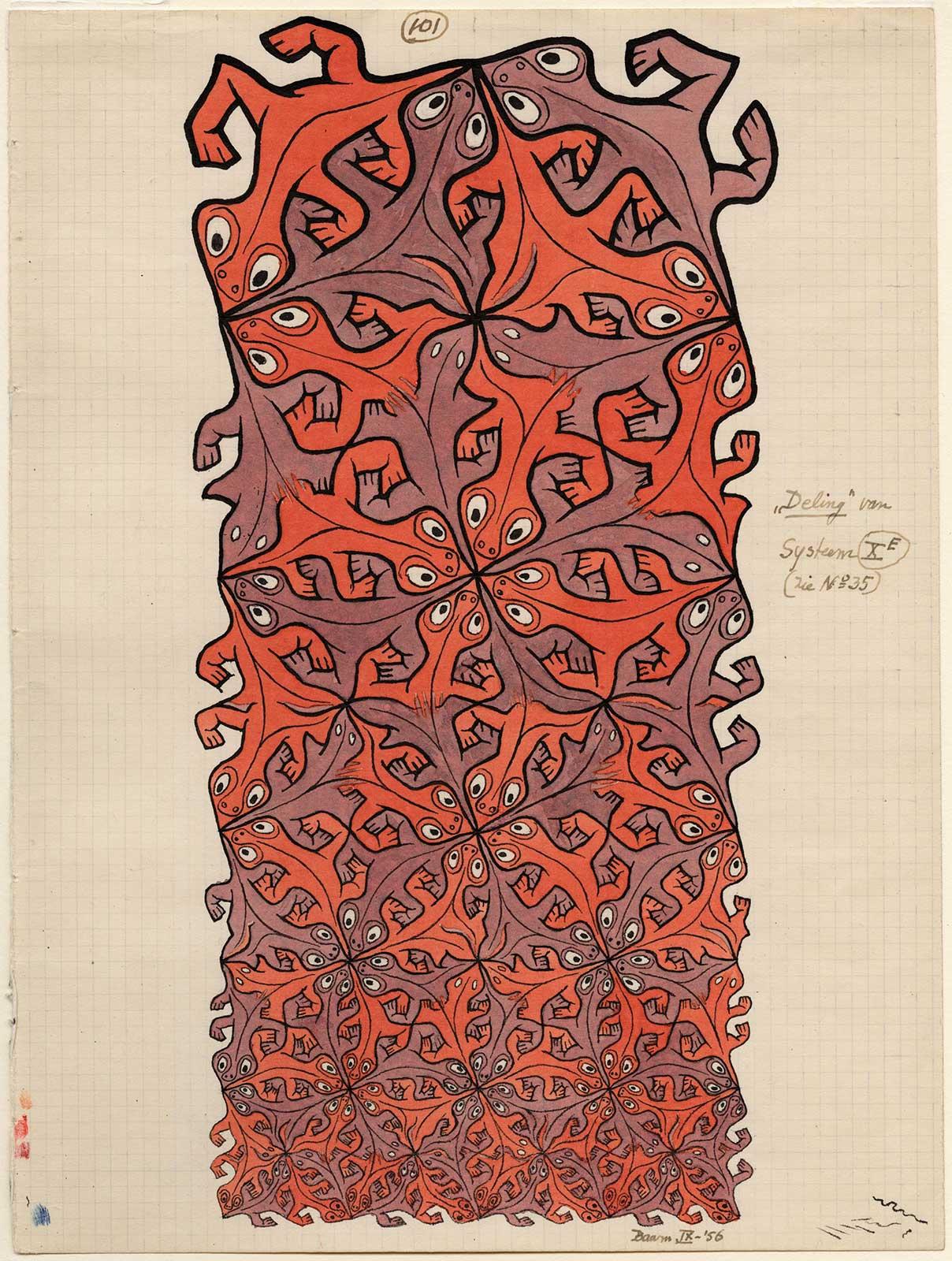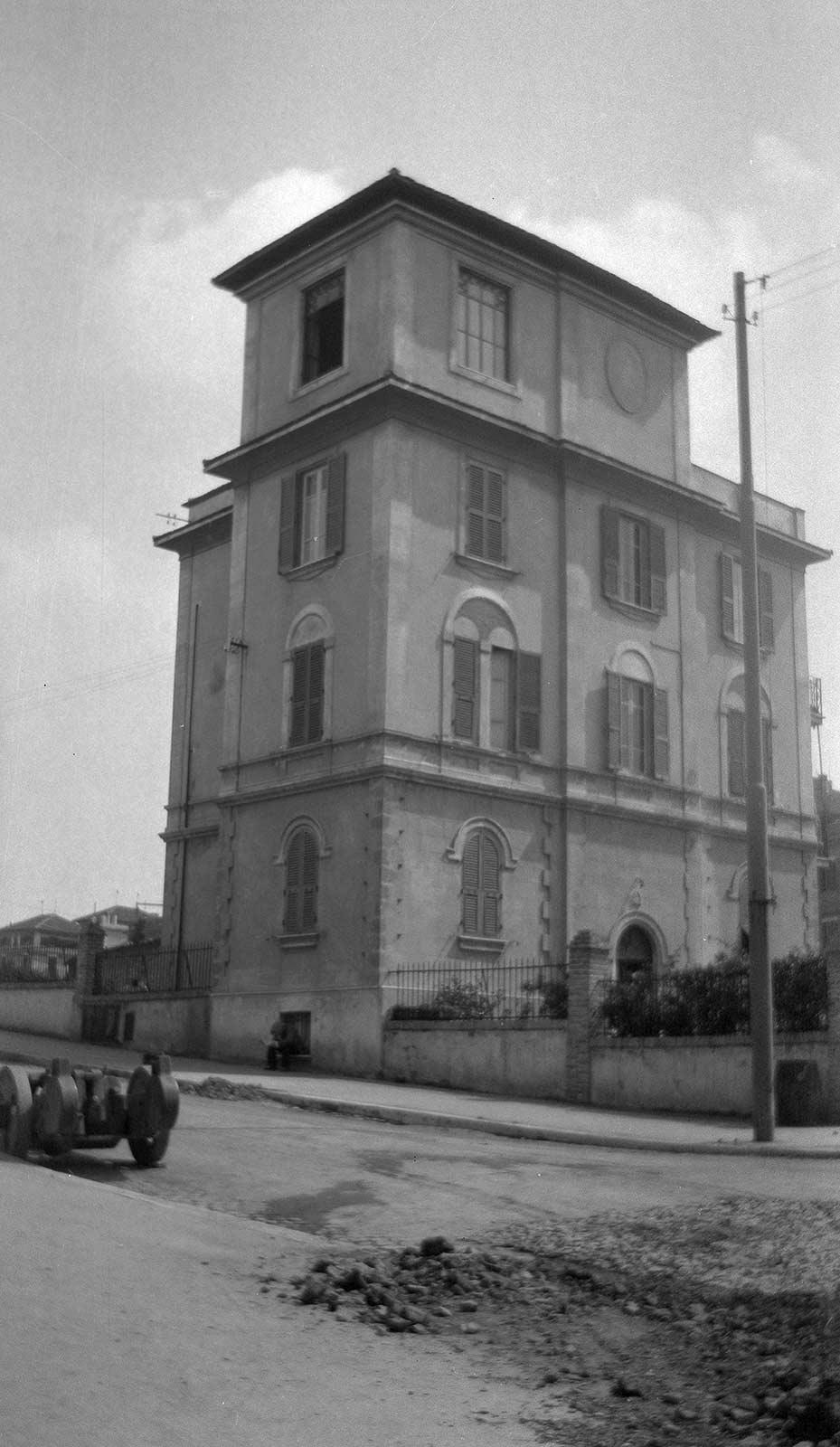

From today onwards, Leonardo da Vinci is on display at the Teylers Museum in Haarlem. This is the first ever major overview of original artworks by the Italian Renaissance artist Leonardo da Vinci (1452-1519) to be held in the Netherlands. Teylers is exhibiting 33 drawings by the master and an equal number of works by contemporaries. Da Vinci was not only able to draw and paint beautifully, he is also world-famous for his inventions of flying machines and military artillery. He did not see art and science as separate ‘worlds’. For him they were entirely interrelated. This is one point that Da Vinci and Escher have in common. Both are first and foremost excellent observers. They look at the world with a logical, orderly view and know how to get those observations and the thoughts they derive from them onto paper. They both did so with their left hand. Both also found favour in popular culture through one or a few works (consider in this regard the Mona Lisa and the Vitruvian Man and Relativity and Day and Night), though it is questionable whether people know who the creators are.
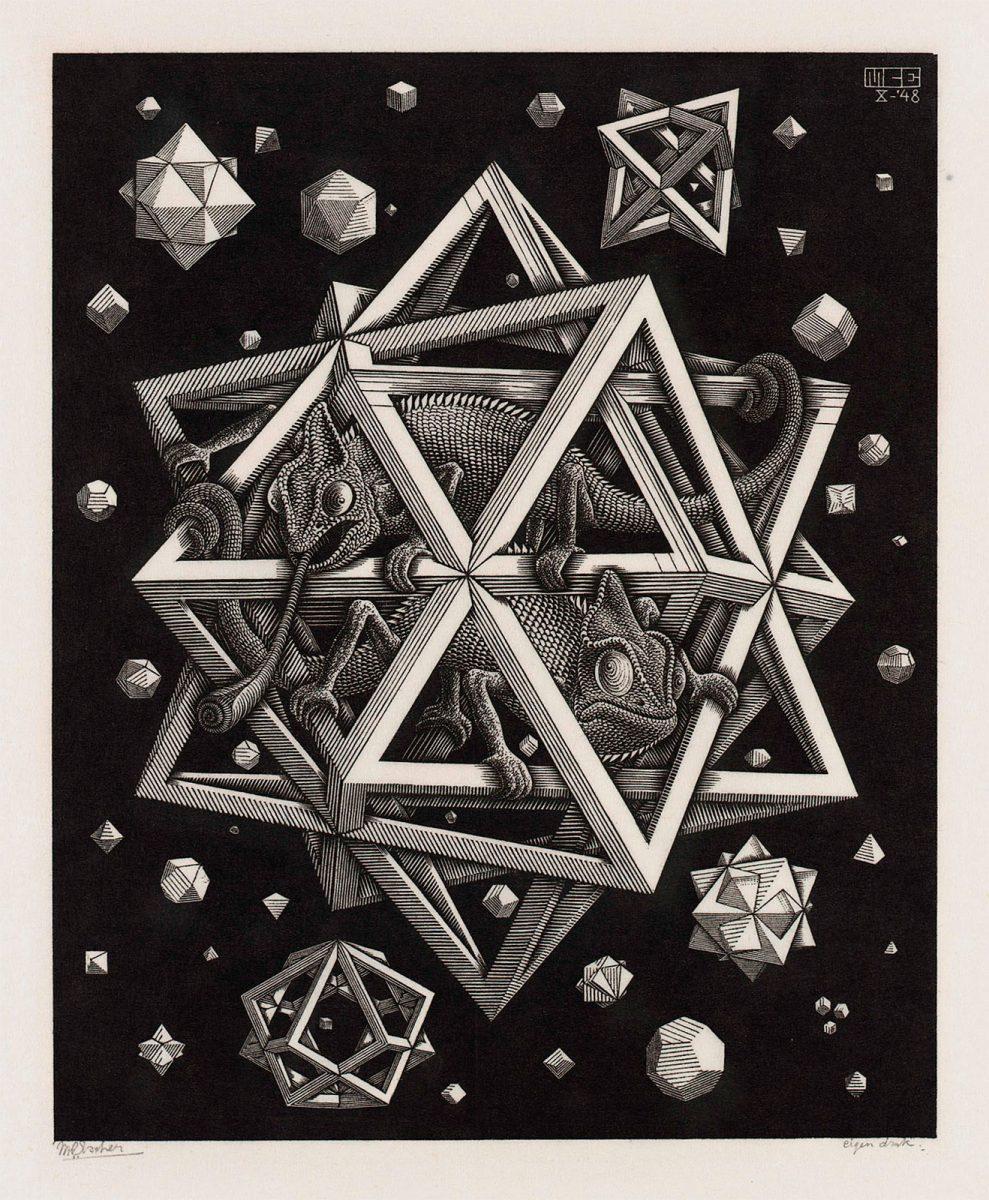
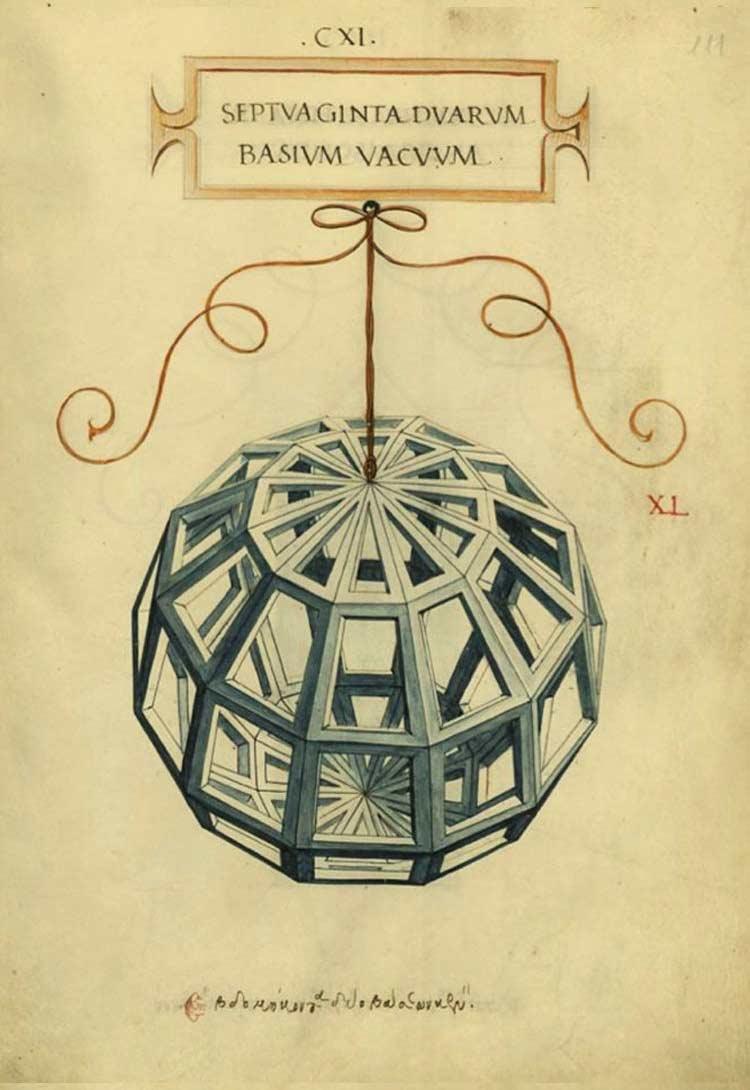
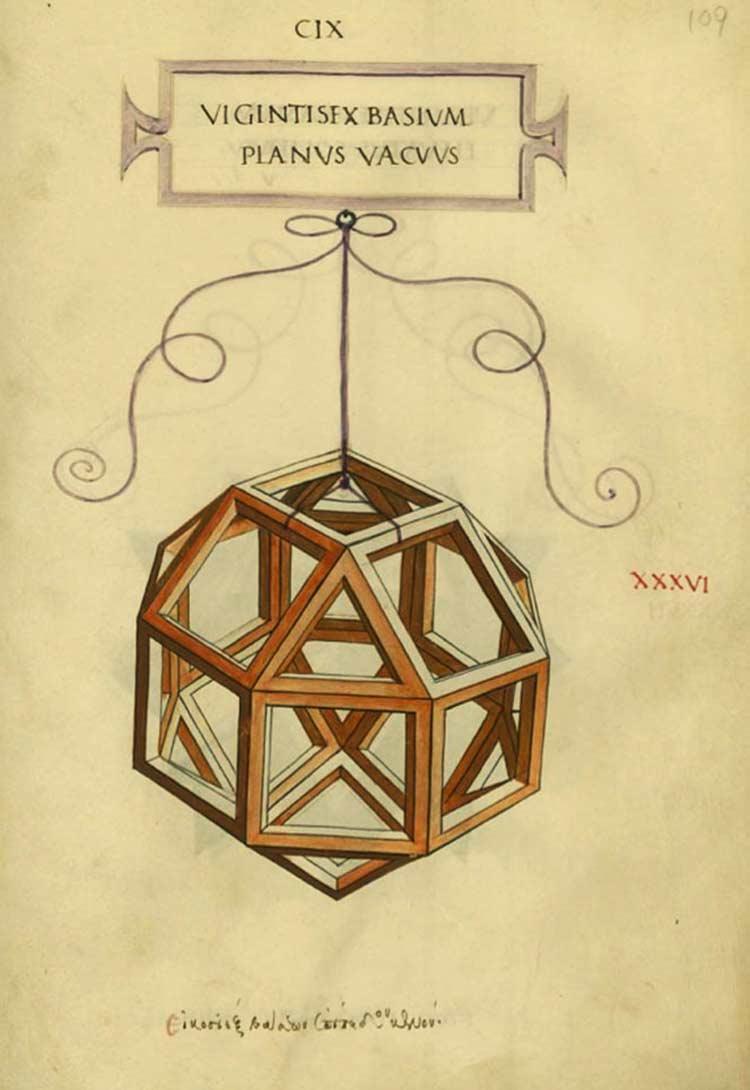
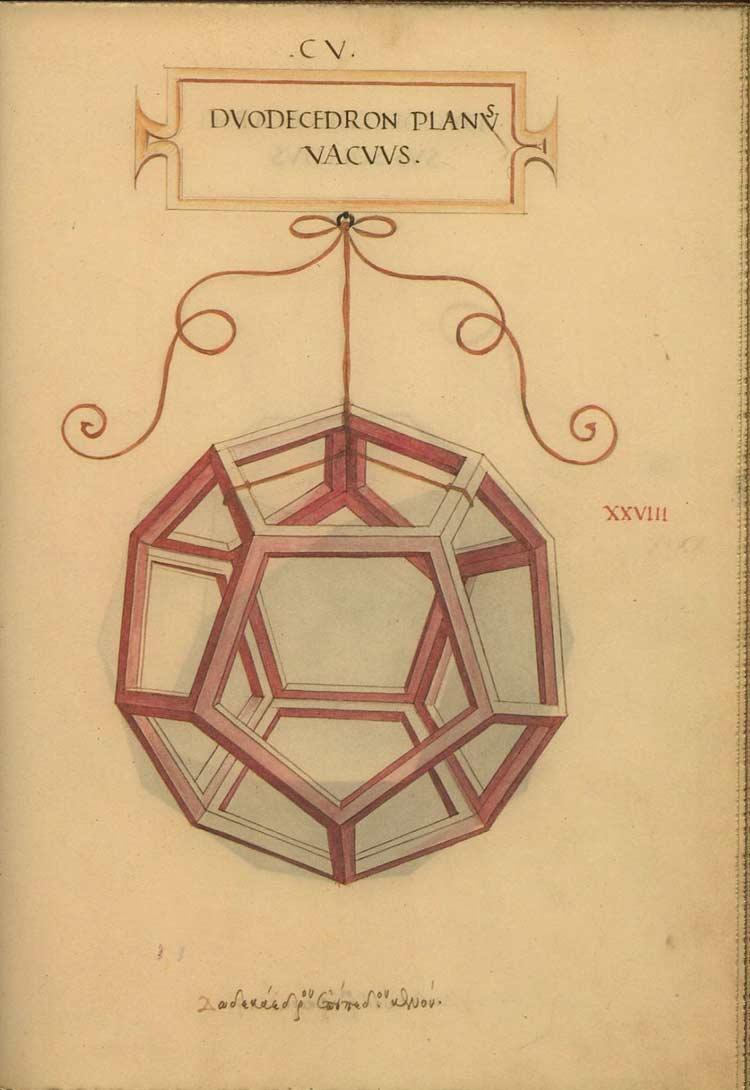
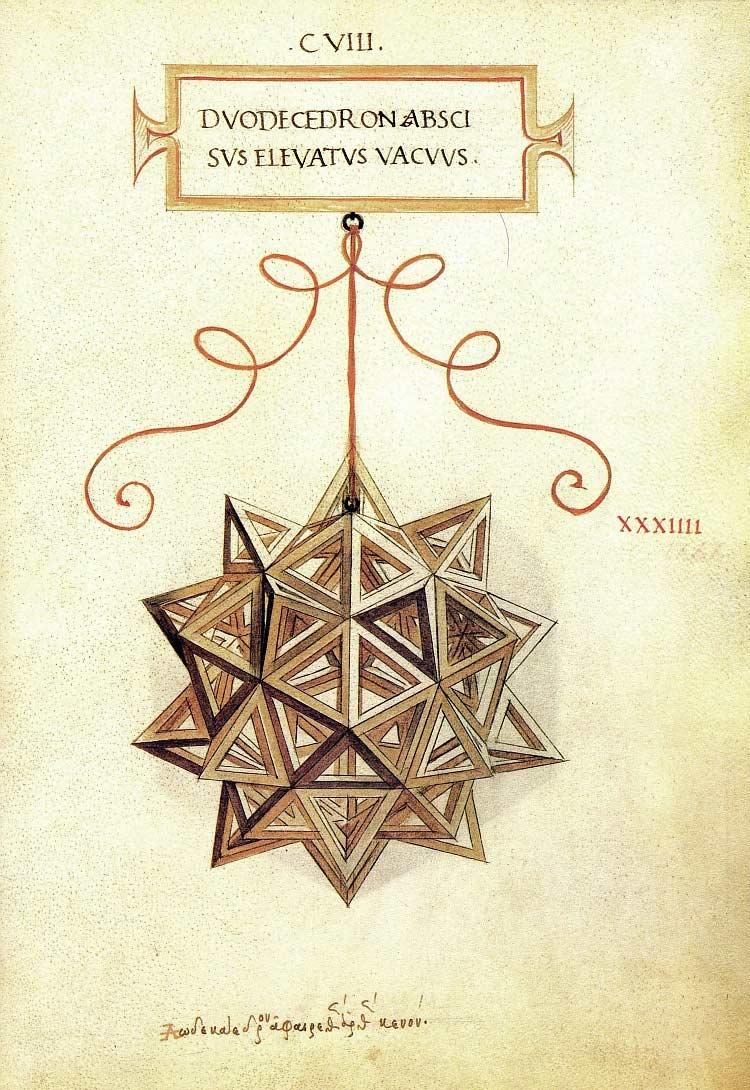
Escher had been in possession of the writings of Leonardo da Vinci since as far back as the 1930s, but he never came around to actually read them carefully. The old Italian in which they were written was difficult and not really suitable for the young man he was then. Twenty years later, this was different. In a letter to son Arthur from November 1956, Escher wrote that he had reread them.* He began to believe that for such books so far he:
“was too young and not contemplative enough, because in the past I did not derive as much pleasure from them as I do now. It is unbelievable how clear a view this man had around 1500on all kinds of geological issues, for example on the meaning and origin of fossils! His so-called philosophical pieces are possibly even more entertaining. Allegorical stories in which he describes all kinds of animals in a delightful way.”
His great example took great care and pleasure in describing the behaviour of birds. Something that he himself had always done.** Escher read everything that had been published by Da Vinci, including his short notes:
“When you read those, it is just like he is sitting next to you talking. As a lonely sage and melancholic giant in 15th-century Italy. “La luna densa e grave, come sta, la luna?” That is, for example, a half wistful, half joking question, which he just jotted down somewhere in his notebooks and which really affects me. Because I may—perhaps rightly, perhaps mistakenly—feel the same sense of mute wonder, which catches me when I look at the moon. I think ‘densa’ is best translated with compact and ‘grave’ is more weighty than serious.”
He was less impressed by what had been published about Da Vinci:
“I find the gossip about great figures, especially Da Vinci, to be problematic because they always mess with the so-called intentions of long-dead geniuses. That is all completely uncontrollable. By the way, I am always suspicious of psychoanalytic attempts at works of art.”
For Escher the notes of Da Vinci himself were quite enough, as were his booklets full of sketches and notes. Among these were many lists of financial expenses, a habit Escher had too. His diaries are full of them.***
But there were more similarities: Leonardo’s fascination with mirrors, with mathematical solutions, with notation, with light and dark, with astronomy and celestial bodies:
“To see the nature of the planets, open the roof and bring the image of a single planet back to the base of a concave mirror. The image of the planet that is reflected by the base will show the surface of a planet much larger.'****
Da Vinci’s studies of the movement of water and the comparison of the waves on the water’s surface with the rays of the sun, also fascinated him. Da Vinci studied geology, fossils and the five Platonic solids (with four, six, eight, 12 and 20 faces, as well as their derivatives). All subjects which intrigued Escher too.*****
But for Da Vinci algebra proved to be difficult too, just as it was for Escher.****** Nevertheless, the Italian scientist and artist is often seen as the personification of the uomo universale, a man who has realised all possibilities to develop himself to a high level. It was an image that Escher liked to emulate.
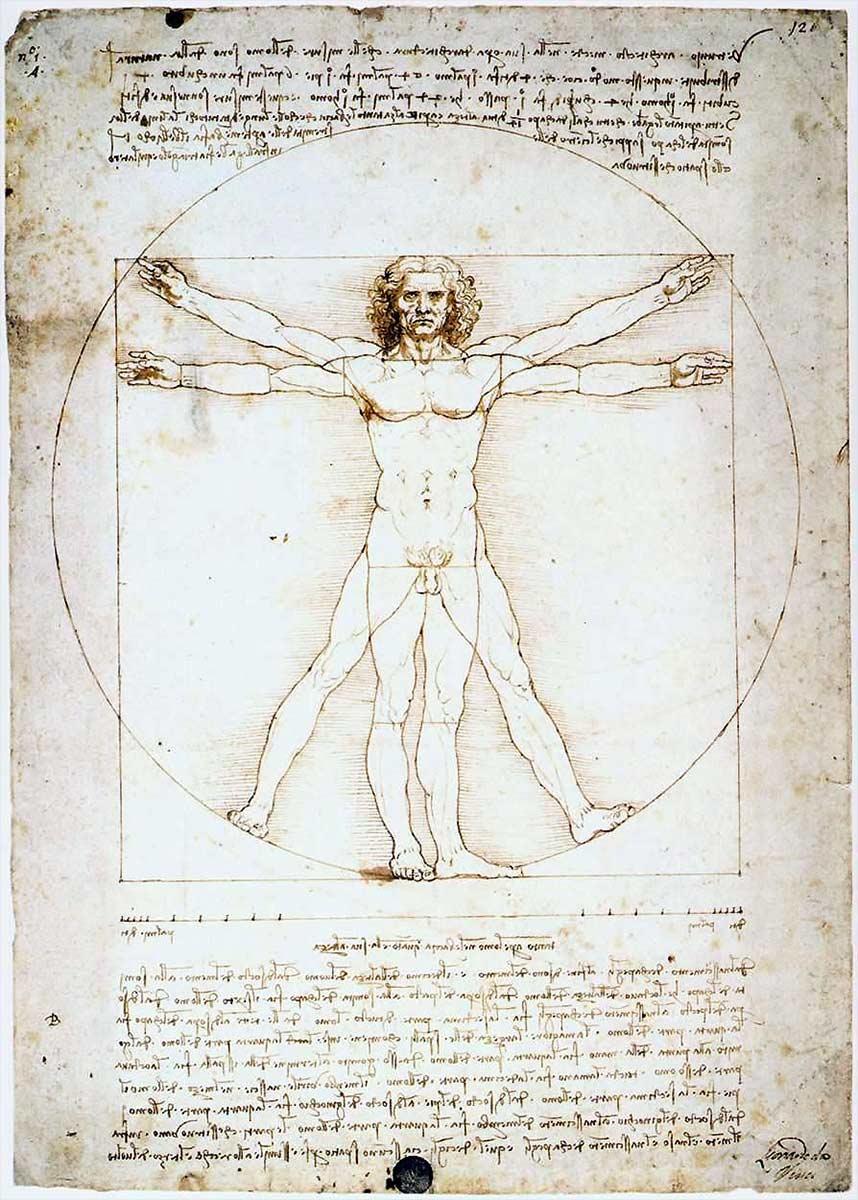
Source
1-5: Wim Hazeu, M.C. Escher, Een biografie, Meulenhoff, 1998, pp. 379-380
More Escher today

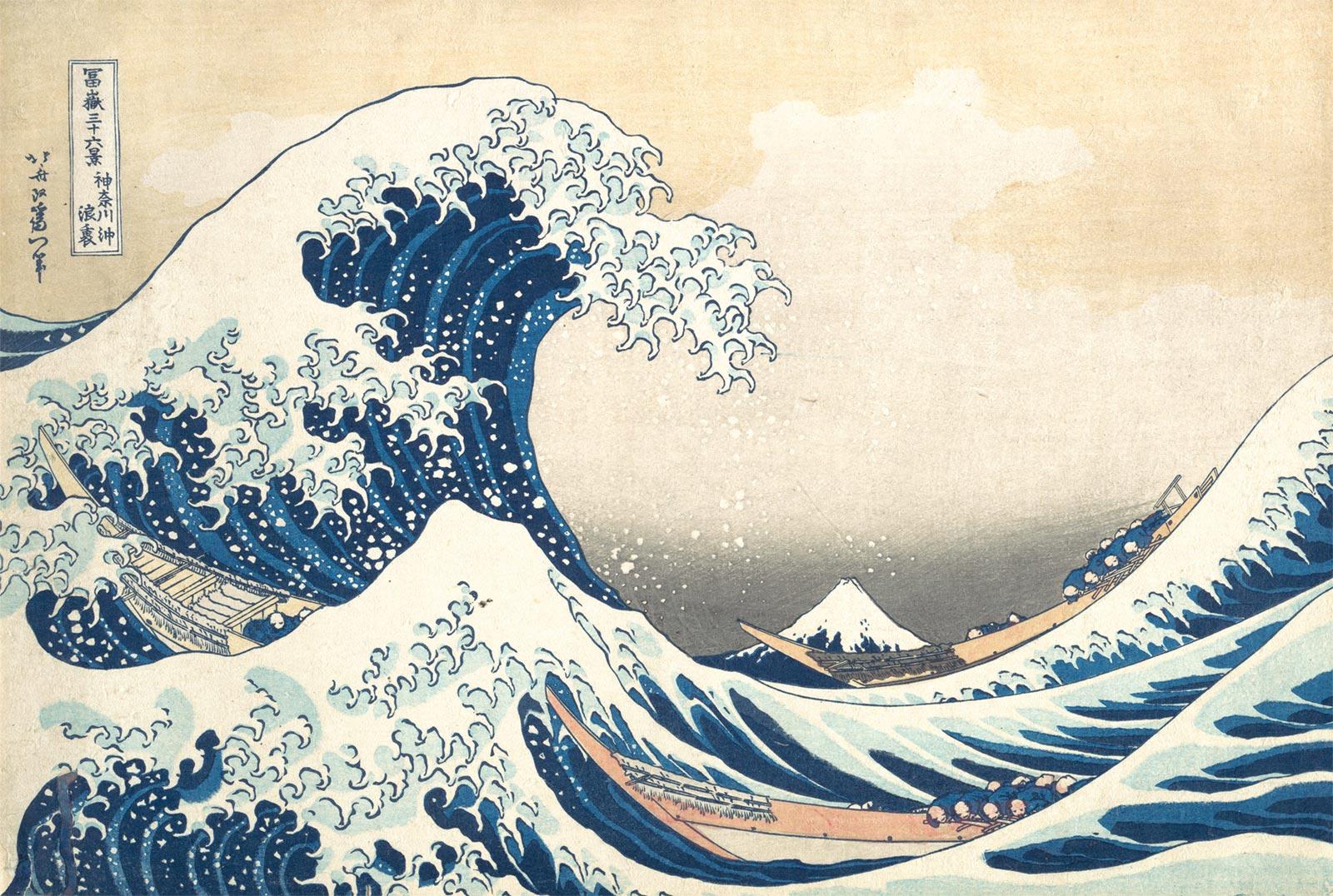
Hokusai's big wave
